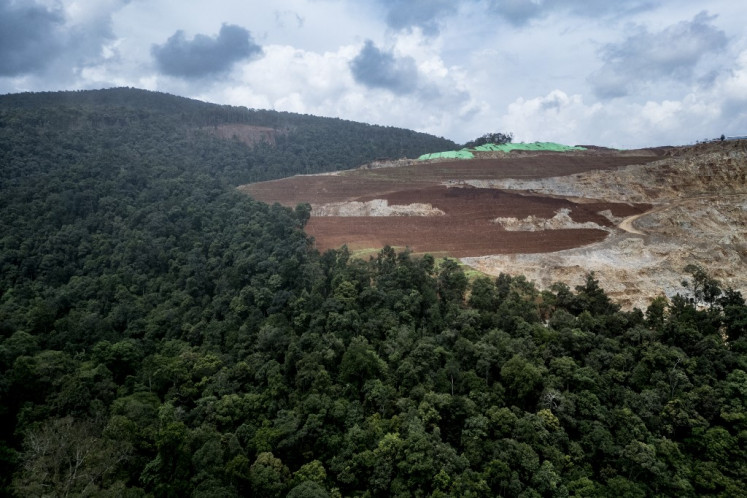Popular Reads
Top Results
Can't find what you're looking for?
View all search resultsPopular Reads
Top Results
Can't find what you're looking for?
View all search resultsIllegal hunting endangers rare birds in Lake Limboto
A population of endangered bird species in Gorontalo is on the verge of a sharp decline as rampant illegal hunting continues to take place at Lake Limboto, the provinceâs biggest lake
Change text size
Gift Premium Articles
to Anyone
A
population of endangered bird species in Gorontalo is on the verge of a sharp decline as rampant illegal hunting continues to take place at Lake Limboto, the province's biggest lake.
Rosyid Azhar, a local photographer who is renowned for intensively documenting pictures of various rare birds at the lake, said on Thursday that bird hunting usually took place from morning until afternoon, during which poachers came either individually or in groups.
'This has been happening every day, especially on Sundays or holidays,' Rosyid told The Jakarta Post.
Rosyid claimed that many of the hunters did so just as a hobby and to have fun while few others did it for food or to earn money.
What was concerning, he said, was that many of the targeted birds were protected ones, including white egrets, whiskered tern, whimbrel and various kinds of hawks. Rosyid said most of the birds living on Lake Limboto were water birds.
'They use gunshots or pesticides to trap the birds,' he said.
The 3,000-hectare Lake Limboto, which spans from Gorontalo municipality to Gorontalo regency, attracts migrating birds that fly thousands of kilometers from various parts of the globe.
Rosyid and his fellow photographers in the Gorontalo Photography Community (MFG), together with BirdLife Indonesia, have identified at least 30 migrant birds that make annual transit in the lake.
During a particular season, the birds migrate in groups and stay at Lake Limboto for several months before moving to another place. Even up to the present migratory birds can still be found there.
They come from different continents around the globe, traveling a maximum of 18,000 kilometers from their places of origin. One example of these migratory birds is the black-winged stilt, or the gagang bayam as it is locally known. These birds can be found from Europe down to Sub-Saharan Africa and Madagascar and east as far as Central Asia, India, China and Taiwan.
Another species is the oriental plover, which comes from South Siberia, Mongolia and northeast China, stopping over at Lake Limboto when migrating to the Great Sunda and northern Australia.
Activist Amsurya Warman Amsa of a local bird association said there were actually regulations that banned people from hunting protected animals. Among the regulations were Government Regulation No. 7/1999 on plant and animal preservation and Law No. 5/1990 on conservation of biological natural resources and their
ecosystems.
He said the regulations carried a maximum penalty of five years' imprisonment and a maximum fine of Rp 100 million (US$7,374).
'But the law enforcement is still weak,' Amsurya said.
He said the migratory birds at Limboto could be a tourist attraction offered in the form of bird watching experiences or bird identification activities.
He suggested that the regional administrations could come up with bylaws to strengthen the implementation of the existing government regulations and laws, while reviving local wisdom.
'In the past there was a regulation that limited the consumption of maleo eggs. We need to revive this kind of wisdom,' said Amsurya, referring to the endemic bird of Sulawesi.










